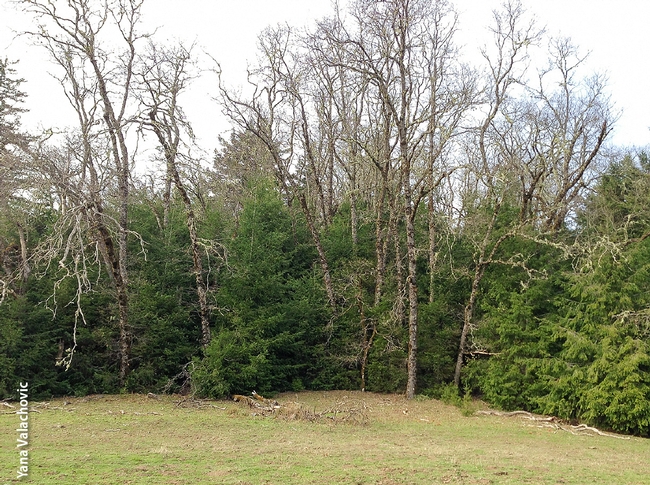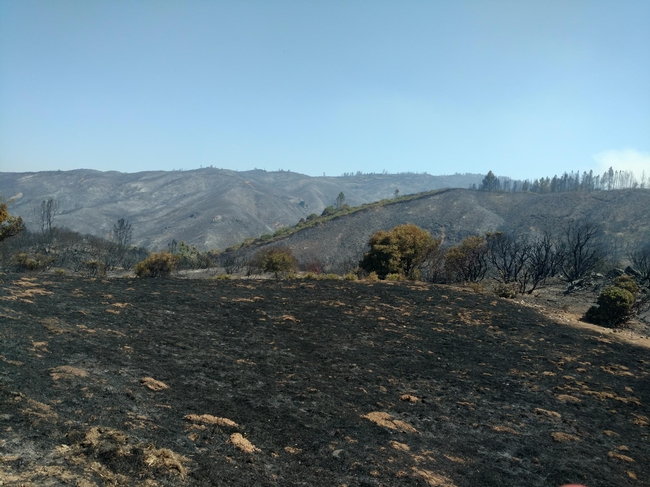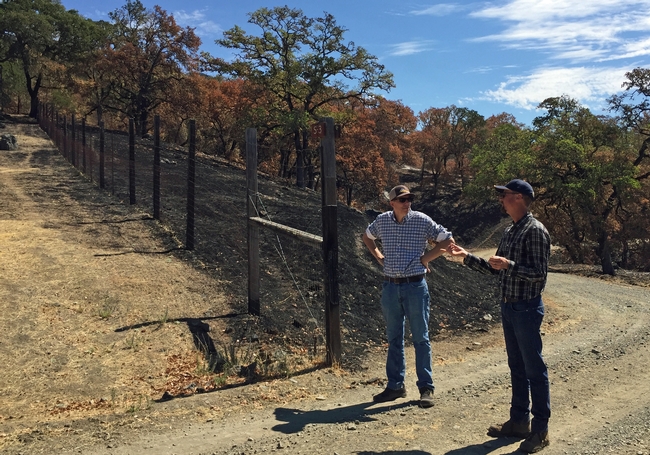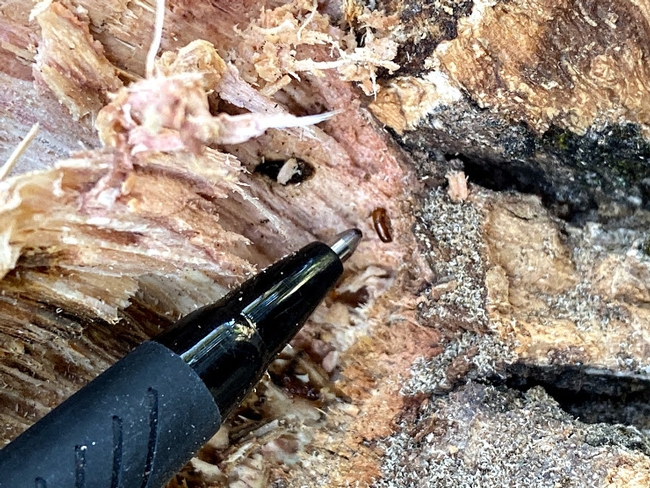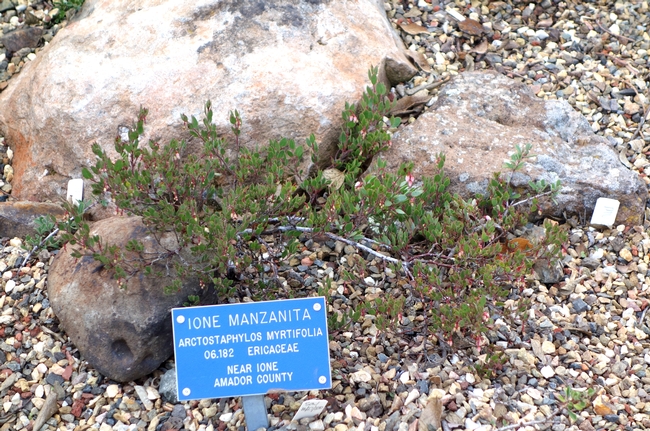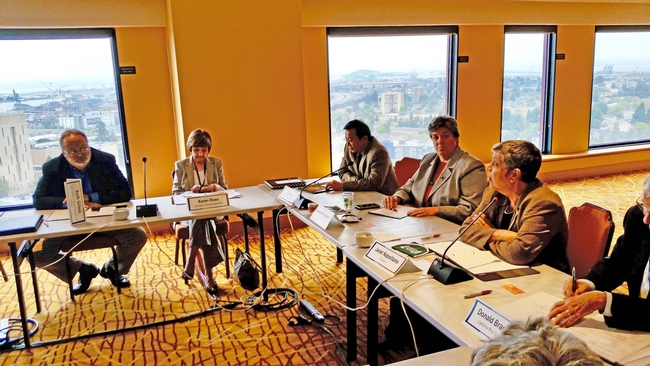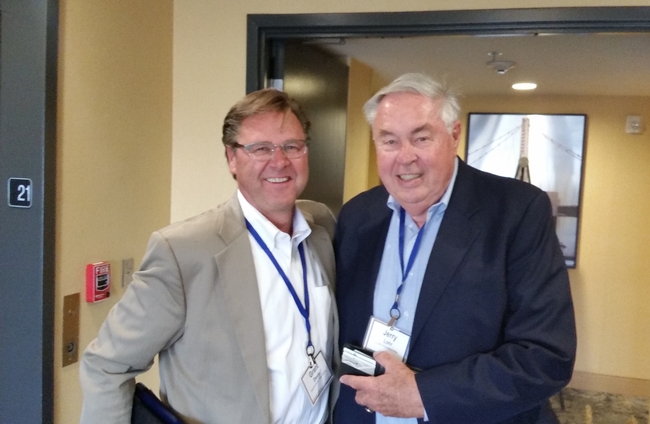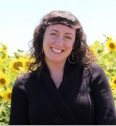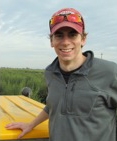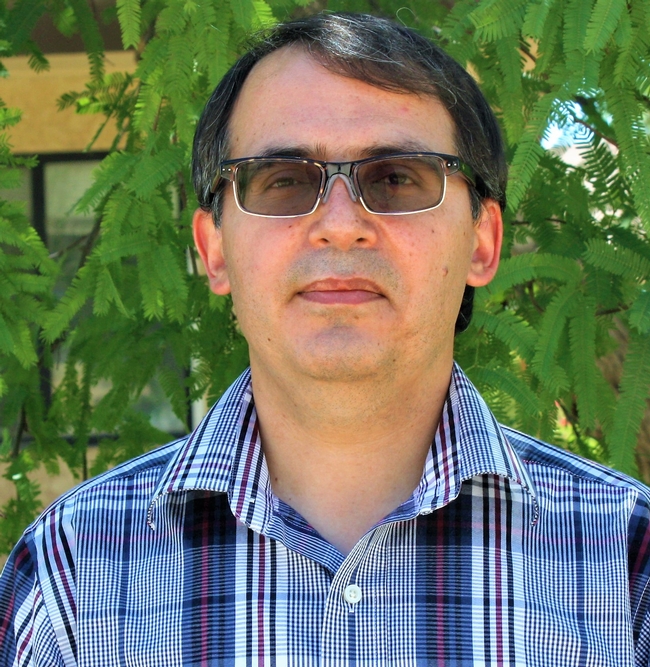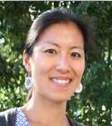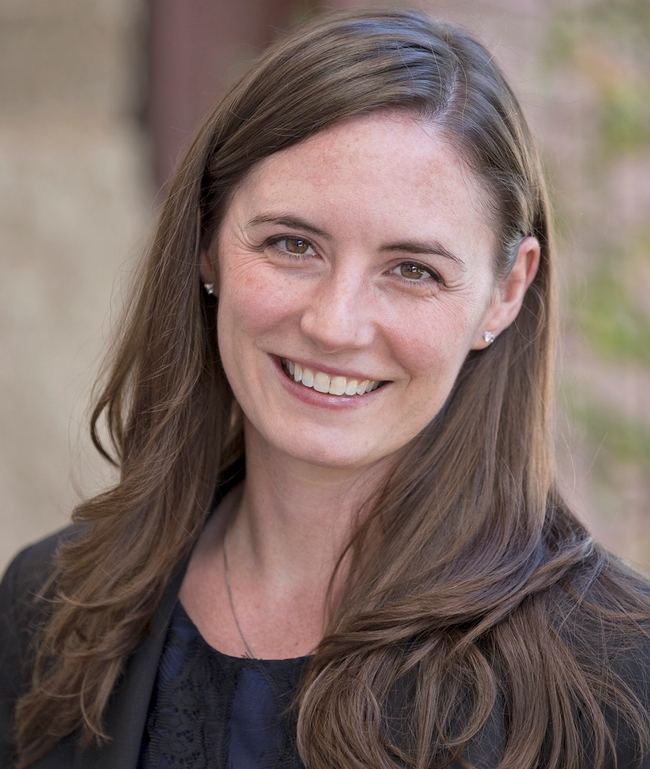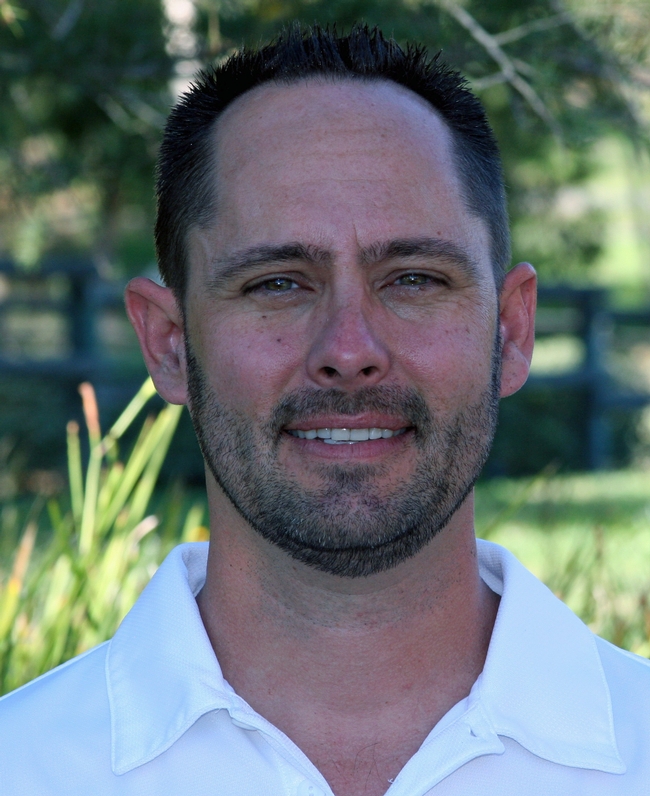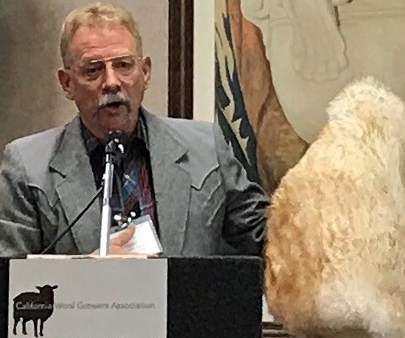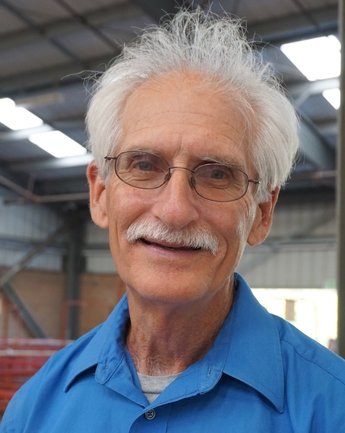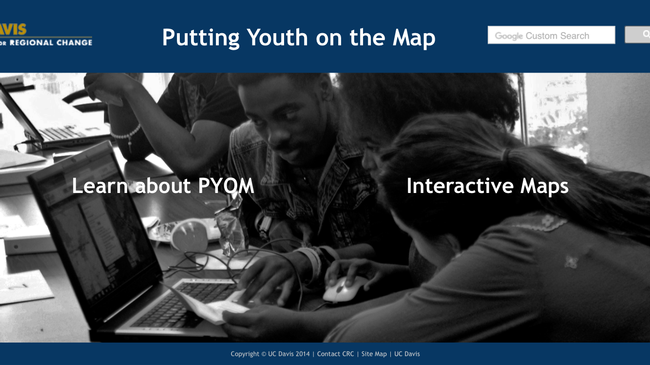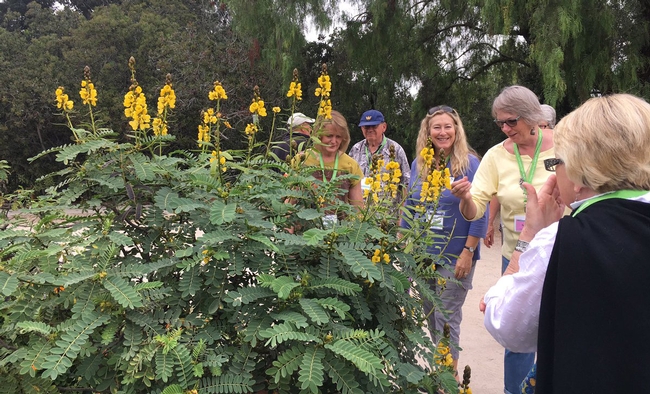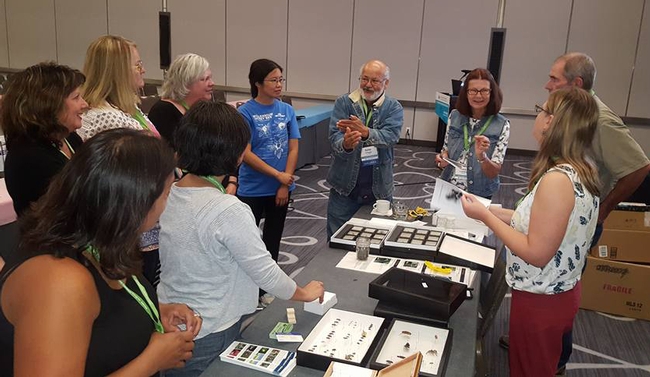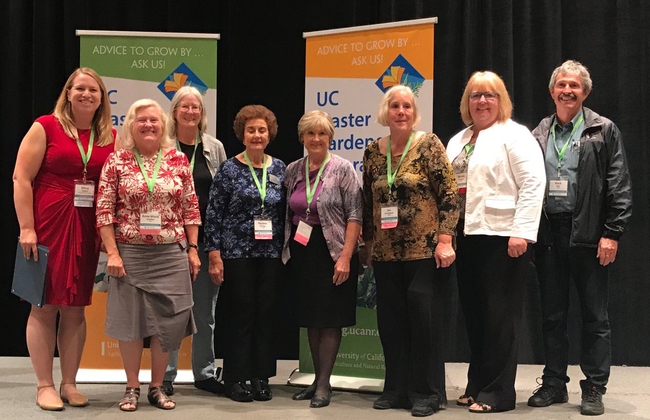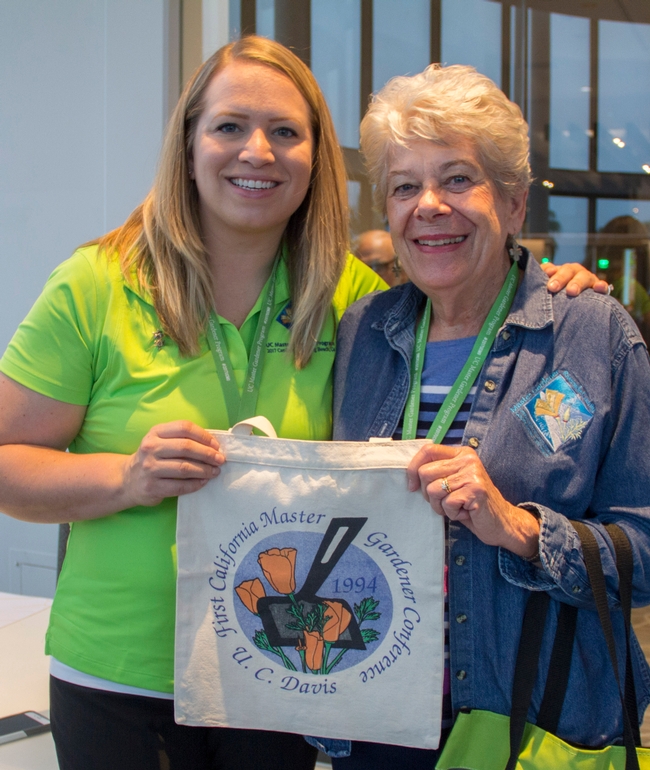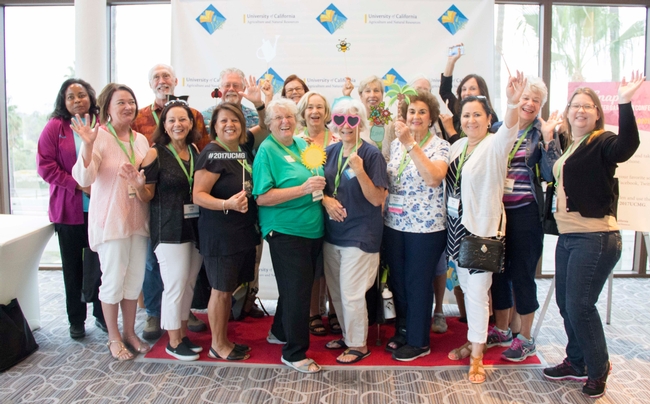Posts Tagged: oak woodlands
Hundreds sign up for online oak woodland workshop
California oak woodlands are highly prized ecoregions where stately trees, many of them hundreds of years old, are cornerstones of a habitat for wildlife and native plants. Sadly, some of these ecosystems are seriously threatened by exotic pests and diseases, encroachment by less desirable vegetation, and wildfire.
Each year, UC Cooperative Extension hosts workshops to share scientific developments aimed at conserving these important habitats – and the economic value of ranching – on oak woodlands, which are found on the lower elevation slopes of the Sierra Nevada, the Coast Range and other foothill areas of California.
Typically, the workshops are held in person and draw moderate-sized audiences for presentations, questions and answers, and field trips. Because of the COVID-19 pandemic, this year's workshop was offered online in April with pre-recorded presentations available for viewing at the participants' convenience and a live question-and-answer session on Zoom.
The retooled event garnered 500 registrants, over 300 views of the YouTube videos and 140 participants in the live Q&A session. The presentations and Q&A session are still available online for future viewing as well.
“People from all walks of life participated, including those with professional and personal interest in oak woodlands,” said Yana Valachovic, UCCE forest advisor in Humboldt and Del Norte counties and a conference organizer.
Presentations at the 2020 conference included the following topics:
Encroachment by Douglas-fir
In Northern California, the biodiversity of oak woodlands is being threatened by Douglas-fir encroachment. The oaks' shade helps the young conifers get established with protection from harsh sun. In time, the fast-growing Douglas-fir trees pierce the oak canopies and begin to crowd out the areas' native understories, which are important for the diversity of birds, mammals and reptiles attracted to oaks.
As the Douglas-fir continue to grow and multiply, they threaten the very lives of the oak trees and the unique ecosystem they dominate.
To better understand the Douglas-fir encroachment, Valachovic established 10 research sites in Humboldt and Mendocino counties to gather information about the fate and the age of oaks. She and her research partners determined the ages of the oaks and firs, and counted the seedlings, saplings, snags and understory vegetation.
“With this research, we were able to demonstrate that even though the oak trees can be smaller in diameter they are much older than the Douglas-fir trees,” Valachovic said. “The encroachment process is happening quickly, and the oaks are falling out of the system.”
The shift appears to have been initiated in the mid-19th and early-20th centuries, coinciding with the Gold Rush and wildfire suppression.
With the data confirming Douglas-fir encroachment, Valachovic turned her attention to oak woodland restoration. At 14 sites in Humboldt and Trinity counties, her team studied the effects of Douglas-fir removal.
“Grasses and forbs under the oaks reestablished. Diameter growth on the oaks increased,” she said.
These research findings contributed directly to changes in policy that had previously limited land owners' ability to remove and sell conifers encroaching on oak woodland. The research also helped create new funding opportunities to support oak woodland restoration and conservation in Northern California.
Case study of oak woodland wildfire recovery
In July 2018, about two-thirds of the 5,289-acre UC Hopland Research and Extension Center was burned by the River Fire.
The transformation of the land, which had likely been without a large wildland fire for at least 100 years, was intense and stressful, said UC Cooperative Extension forest advisor Michael Jones. However, it also provided a unique opportunity for researchers to compare the impact of wildfire on the resiliency of vegetation on grazed and ungrazed oak woodland.
Jones established 35 one-fifth acre research plots at the research center and collected data two months following the fire and one year later. The research will continue in the future to better understand long-term impacts, but Jones was able to share revealing early results at the workshop.
Right after the fire, in severely burned areas areas, the future of the oaks looked ominous. Jones predicted 40% tree mortality.
“The oaks were exposed to persistent, intense heat. They were cooked,” he said. “But two months after the fire, we were already seeing basal sprouts. This was an amazing response by the trees. Oaks are pretty damn tough.”
A year after the fire, surveys showed that tree mortality in the burned areas was 25%, much less than Jones' early predictions. While some management for specific situations in severely burned areas may be necessary – such as removal of hazard trees, reducing fuels in defensible spaces or removal to control invasive species – the results of this work show the trees recover naturally.
“Esthetically, I know these systems aren't as pleasing as they were before, but ecologically, they are healthy and recovering,” he said. “In 100 years, it will look just as good as before the fire.”
Fire impacts in woodland areas previously grazed and not grazed
The fire on the research station also permitted Jones to compare the fire's differing impact on non-grazed and grazed oak woodland. At first, the grazed areas looked almost unscathed with minimal flame scorching on the bark, while an area where the pasture hadn't been grazed for 25 years had evidence of much higher severity fire.
“Grazing is a phenomenal way to help manage fuels,” Jones said. However, the grazed areas displayed ecological shortcomings a year later.
“In grazed pastures, the large mature trees were still alive, but there was no oak regeneration (basal sprouting or seedlings),” Jones said. “In the ungrazed area, a lot of biomass had been killed, but there's nearly 100% resprout of oak trees and we have an impressive amount of oak seedling recruitment.”
Jones said he isn't discouraging grazing.
“But it is important to protect sites from grazing, and especially wildlife browse, when a landowner or land managers' objectives are to regenerate or conserve oak woodlands,” Jones said.
New ambrosia beetle another threat to California oaks
Akif Eskalen, UC Cooperative Extension specialist in the Department of Plant Pathology at UC Davis, has identified a new insect-fungus team that causes oak borer wilt in Northern California Valley and Blue Oaks. It is an ambrosia beetle, commonly known as Mediterranean Oak Borer, which carries several fungi in its mouth. The beetle bores into the tree and introduces fungi to grow for food. The fungi spreads and disturbs the transportation of water and nutrients, causing wilt in the tree.
The oozing and staining lesions on the bark are similar to other oak fungal diseases, such as Sudden Oak Death. The beetle – native of Mediterranean basin countries in Africa, Asia and Europe – cannot fly far, so most likely is transported for long distances on infested firewood.
During the workshop, Eskalen suggested not moving firewood, removing heavily infested trees and chipping infested wood into 1-inch particles to reduce the spread of the ambrosia beetle and its fungal partner. He asked viewers to report any suspected oak tree infestations to the local agricultural commissioner, CDFA Diagnostic Laboratories, UC Cooperative Extension advisors or CALFIRE. Chemical options for sparing oaks from the ambrosia beetles' devastation are under investigation.
Threats to oaks and other native plants from root rotting Phytophthora
Restoration plantings have inadvertently introduced plant pathogens to native oak woodland ecosystems in California, said Ted Swiecki of Phytosphere Research, an organization that provides consulting services related to natural resource management, horticulture, urban forestry, and agriculture. The group of pathogens causing the damage are largely from the Phytophthora genus, first described in the 1860s. The name translates from Greek to “plant destroyer.”
Swiecki has observed when Phytophthora infested plants and soils are introduced to native habitats, the pathogens can attack various native plants, including toyon, madrone, manzanita and full-grown oaks. Once established, the pathogen can spread along drainages, by moving soil from one area to another and by hitchhiking on equipment, tires and hiking boots.
The pathogen can easily be overlooked at nurseries, which, by their nature, have conditions that favor Phytophthora development. Plants at nurseries are well watered, have high root density and are often placed on the ground where they can pick up pathogens.
He said the best approach to tackling Phytophthora is not using nursery stock for restoration or beautification of natural oak woodland. Direct seeding, using natural regeneration, or onsite propagation are safer ways to enhance vegetation in oak woodland.
“It's easier to prevent Phytophthora from being introduced in the first place and much cheaper and more effective than trying to eradicate it later,” Siewcki said.
PAC discusses strategic plan and urban agriculture
Downtown Oakland was the site of the biannual UC President's Advisory Commission on Agriculture and Natural Resources (PAC) meeting on Aug. 9, which included a Q&A session with President Napolitano, program presentations from UC Cooperative Extension county directors Rob Bennaton and Igor Lacan, and updates from deans Helene Dillard (UC Davis), Keith Gilless (UC Berkeley) and Kathryn Uhrich (UC Riverside), as well as Executive Associate Dean John Pascoe (filling in for Dean Michael Lairmore, UC Davis School of Veterinary Medicine).
In her opening remarks, UC ANR Vice President Glenda Humiston introduced Mark Bell, the division's new vice provost for statewide programs and strategic initiatives. Bell spoke about the strength of the UC system, the diversity of programs offered by UC ANR statewide, and his plans to leverage the strong volunteer and staff base of programs like UC Master Gardeners and 4-H.
Humiston also offered updates on the division's strategic plan and the significant progress made in implementing its key goals. Associate Vice President Tu Tran then gave a presentation on the division's financial situation, which he titled “A Fiscal Plan for Success.” Tran addressed UC ANR's place in the state budget and its revenue projections through FY 2021-22, which includes significant growth in major gifts and fundraising.
Bennaton and Lacan both gave spirited and enthusiastic presentations that were received well. Bennaton, who serves as county director for Alameda and Contra Costa counties as well as UCCE urban agriculture advisor for the Bay Area, discussed the benefits of urban agriculture and the assortment of activities going on in community development, habitat restoration and youth programming.
Lacan, also a UCCE environmental horticulture advisor for the Bay Area and co-director in San Mateo and San Francisco counties, talked about the diverse and richly rewarding work he spearheads in urban forestry. His work currently focuses on sustainable management of urban trees and urban water.
During a Q&A period, the president engaged PAC members on various issues such as potential public-private partnerships that could involve UC ANR, targeted approaches to advocacy and deferred maintenance needs for UC writ large but also for UC ANR and its research and extension centers system, specifically.
The deans gave updates on research and activities occurring at their respective colleges and school.
The next PAC meeting is scheduled for December, also in Oakland.
Travel funds available for UCCE specialists, AES faculty to collaborate with off-campus ANR academics
ANR will be making additional travel support available for UC Cooperative Extension specialists to collaborate with ANR academics off-campus, including UCCE advisors in the counties and ANR academics at the RECs in fiscal year 2017/18.
With the level of funds available, each specialist may apply for up to $2,500 for FY 2017/18 (travel reports must be submitted within 45 days of travel, and funds must be expended by June 30, 2018). These travel funds must be utilized by the UCCE specialists only and cannot be used for out-of-state travel.
UC ANR values the work of AES faculty across the three partner campuses. As the recognized lead for the California Agriculture Experiment Station, UC ANR receives federal Hatch funds to support the AES mission and distributes those funds to the three partner campuses to manage and support AES faculty. In recognition of the importance of the partnership between UC ANR academics and AES faculty, UC ANR is expanding the travel support program to include AES faculty as part of a pilot program. Upon completion of a request, UC ANR will support travel by AES faculty to meet and work with UC ANR county-based or REC-based academics. Support is limited to $1,000 per AES faculty member with a cap on the total pool of funds available set at $25,000 for FY17-18. Additional support may be available through the campuses; AES faculty should consult their departments or colleges to determine if additional support is available. Travel support must be used by the AES faculty member for his/her own travel to plan and execute research or present research findings at meetings hosted by UC ANR academics.
Completing a short online survey is the only step to apply for these funds.
A brief survey form is accessible from your ANR Portal. The direct link is http://ucanr.edu/survey/survey.cfm?surveynumber=18400. The survey asks
• Name and title of specialist requesting support
• Project/Program name
• Brief project description (one paragraph)
• Collaborating advisors
There is no deadline for applications for these travel funds, but they must be expended in the fiscal year 2017/18.
Names in the News
Light joins UCCE as agronomy advisor
Sarah Light joined UCCE on July 5, 2017, as an area agronomy advisor in Sutter, Yuba and Colusa counties.
Light earned a dual M.S. in soil science & botany and plant pathology from Oregon State University and conducted her graduate research in potato production at the Hermiston Agricultural Research and Extension Center in Eastern Oregon. Light, who speaks Spanish, also holds a B.A. in Latin American studies with a minor in Spanish literature from Brandeis University.
Prior to joining UCCE, Light was working as a Biological Science Technician for the USDA Agricultural Research Service on a project that evaluated the impact of biochar application on soil water properties. Light volunteered with the USAID Farmer-to-Farmer program in Malawi and worked for several years in small-scale farms and gardens in the Bay Area.
Light is based in Yuba City and can be reached at (530) 822-7515 and selight@ucanr.edu.
Milliron named UCCE orchards advisor
Luke Milliron joined UCCE on June 12, 2017, as an area sustainable orchard systems advisor in Butte, Glenn and Tehama counties.
Prior to joining UCCE, Milliron worked as an agronomy technician at Dellavalle Laboratory, Inc. since April 2016. He was responsible for soil and plant tissue sampling in almond, walnut, grapevine and processing tomato systems. He also supported grower irrigation management with neutron probe, pressure chamber and watermark readings.
From January 2015 to March 2016, Milliron was a UC Cooperative Extension horticulture intern, funded by the Almond Board of California and the California Dried Plum Board. During his internship, he was based in UCCE Sutter-Yuba and San Joaquin counties where he worked on 20 UCCE trials in almond, prune, walnut, processing tomato and landscape horticulture. Milliron also assisted UCCE farm advisors on visits with almond, prune, walnut and tomato growers, wrote newsletter articles and delivered talks to growers and pest control advisers.
Milliron earned an M.S. in horticulture and agronomy from UC Davis. His research focused on the measurement of almond tree water stress during winter dormancy. He earned a B.S. in agricultural science, with an option in crops and horticulture from California State University, Chico.
Milliron is based in Oroville and can be reached at (530) 828-9666 and lkmilliron@ucanr.edu and on Twitter @MillironLuke.
Satomi joins UCCE as forestry advisor
Ricky Satomi joined UCCE on May 15, 2017, as an Area Forestry and Natural Resources Advisor in Shasta, Trinity and Siskiyou counties.
Satomi earned an M.S. in forestry from UC Berkeley and a B.S. in forestry & natural resources and society & environment from UC Berkeley.
Prior to joining UCCE, Satomi worked as a research associate with the UC Wood Biomass Utilization Group, analyzing wood utilization capacity in California. His master's thesis focused on productivity and cost tracking of forest fuel mastication treatments using open source geospatial analysis. He also developed interactive web and audiovisual platforms to enhance delivery of forest management practices to the public. From 2009 to 2013, Satomi was a field forester working on inventory and management plans for land ownerships throughout Northern California.
Satomi is based in Redding and can be reached at (530) 224-4900 and rpsatomi@ucanr.edu.
Montazar joins UCCE as water management advisor
Aliasghar Montazar joined UCCE on June 1, 2017, as an area irrigation and water management advisor in Imperial and Riverside counties.
Prior to joining UCCE, Montazar was a project scientist in the Department of Plant Sciences at UC Davis for three years. From 2011 to 2014, he was a research associate in the Department of Land, Air and Water Resources at UC Davis. He is also a former associate professor at the Department of Irrigation and Drainage Engineering at the University of Tehran, Iran. Montazar has more than 15 years of research, extension, teaching and technical consulting experience and has served in several leadership positions in agricultural water management and irrigation engineering in California and abroad.
Montazar, who is fluent in Persian and Arabic, earned a Ph.D. in irrigation and drainage from University of Tehran, Iran; an M.S. in irrigation structures from Tarbiat Modares University, Iran; and a B.S. in irrigation engineering from Ferdowsi University of Mashhad, Iran.
Montazaris is based in Holtville and can be reached at (442) 265-7707 and amontazar@ucanr.edu.
Chen named nutrition, family and consumer sciences advisor
Wei-ting Chen joined UCCE on Aug. 29, 2016, as the area nutrition, family and consumer sciences advisor in San Mateo, Santa Clara and San Francisco counties.
Prior to joining UCCE, Chen worked for a health communications firm based in Atlanta, Ga., where she managed health communication projects for the Centers for Disease Control and Prevention (CDC) and led user research and evaluation efforts for web-based health communication products.
At Johns Hopkins University, she developed an urban agriculture summer training program for low-income inner-city teens, led the founding and operations of the university's first community garden, conducted a literature review on the topics of community food security and farm-to-school through the Center for a Livable Future at the Johns Hopkins Bloomberg School of Public Health, and surveyed SNAP recipients at farmers markets about their experience with fruit and vegetable incentives. Her dissertation combined her interest in poverty, social policy, and food system issues and examined public assistance-dependent mothers experience as consumers in the food system and how they made food decisions for their households. From 2005 to 2008, Chen, who is fluent in Mandarin Chinese, worked for the California Charter Schools Association coordinating its board and leadership development program.
She earned a Ph.D. and an M.A. in sociology at Johns Hopkins University and her B.A. in political science and sociology at UC Davis.
Chen is based in Half Moon Bay and can be reached at (650) 276-7429 and wtgchen@ucanr.edu.
Megaro joins ANR as government and community relations director
Anne Megaro joined UC ANR as government and community relations director on Aug. 28. In her new role, Megaro will guide UC ANR employees in nurturing relationships with government officials and will monitor legislation that could affect UC ANR. She will also develop programs to promote community awareness of UC ANR.
Megaro, who earned a Ph.D. in animal science from Cornell University and a B.S. in animal science and management from UC Davis, brings a solid understanding of agriculture, science and the UC system along with knowledge of California's legislative processes.
“We're absolutely thrilled to have someone of Anne's caliber and credentials on board at UC ANR,” said Vice President Glenda Humiston. “Her hiring is a real coup for us and couldn't come at a more critical time. Educating our elected officials about the value of ANR research and outreach is always important, but especially as we try to increase investment in research infrastructure to address issues such as water, wildfire, invasive pests, food insecurity and other challenges facing the state.”
For the past five years, Megaro has been the California State Senate Committee on Agriculture's consultant. As the sole agriculture committee consultant for the Senate, Megaro planned legislative hearings, conducted independent research and analyzed agricultural bills to advise senators and staff on policy and legislative issues. She collaborated with senators, assembly members, governor's staff, legislative staff, government agencies, stakeholders and members of the public to resolve issues related to specific bills or policies.
“With the goodwill she's developed and contacts she's made in the state Senate, coupled with her ability to work with UC Cooperative Extension county directors and Research and Extension Center directors on effectively engaging policymakers at the local level, Anne will elevate UC ANR's ability to connect people with the data they need to make informed policy decisions,” Humiston said.
Megaro is based at the ANR building in Davis in Room 178 and can be reached at (530) 750-1218 and ammegaro@ucanr.edu.
Haver named interim associate director of REC system
Darren Haver has agreed to serve as the interim associate director of the Research and Extension Center system, effective Oct. 1, 2017. Haver has served as the UC Cooperative Extension water resources advisor in Orange County since 2002, director of South Coast Research and Extension Center in Irvine since 2009 and director of UC Cooperative Extension in Orange County beginning in 2011.
“Darren brings a wealth of experience to this position,” said Wendy Powers, associate vice president and interim REC director. “We continue to develop a plan to address administrative vacancies and look forward to working with him in this interim role.”
Haver will serve in this capacity until June 30, 2018, or until a new director is appointed. He will succeed Lisa Fischer, who plans to retire from UC ANR in September after five years as associate director of the REC system.
“Under her direction, each REC has developed a strategic plan to set the course for the future and numerous capital improvements have been made to the RECs, including new office and conference spaces,” said Powers. “We wish Lisa the very best as she takes on new adventures.”
Harper honored by California Wool Growers
John Harper, UCCE livestock advisor for Mendocino and Lake counties, received the California Wool Growers Association's Golden Fleece Award at their annual meeting Aug. 19 in Cambria.
The Golden Fleece Award is presented each year to a living and active member of the California Wool Growers Association or a public official who through his or her position has made a lasting contribution to the California sheep industry. This is the “un-sung hero” award. Recipients are intended to be those individuals who have given unremitting support and service to the California sheep industry and received little recognition for their efforts.
“John Harper was honored with the California Wool Growers Association Golden Fleece Award for his unrecognized contributions as livestock/natural resources advisor for Mendocino and Lake counties to the California sheep industry over the years,” said Erica Sanko, CWGA executive director. “John is known statewide and nationally for his sheep shearing and wool grading schools, which provides a much-needed resource of qualified sheep shearers for the California sheep industry.”
Since 1990, Harper has been hosting the UC Cooperative Extension Sheep Shearing School, which is the only program of its kind in California. At the five-day intensive course, more than 300 students from California, other states and other countries have been trained to shear sheep, giving them skills to start a new and profitable career. Harper, who serves as secretary for the Mendocino/Lake Wool Growers Association, has also authored or co-authored more than 350 research-based articles and publications.
Ingram honored by Nevada County Fair board
Roger Ingram, UCCE advisor emeritus, was named the 2017 Blue Ribbon Award recipient by the Nevada County Fairgrounds Board of Directors. The award was created by Western Fairs Association (WFA), a nonprofit trade association serving the fair industry, to recognize those who support and contribute to the quality of their local fair. During opening ceremonies on Aug. 9, Ingram was recognized for his contributions to the agriculture programs at the Nevada County Fairgrounds.
Ingram's involvement with the fair began in 1986 when he joined UC Cooperative Extension as the 4-H/livestock and natural resources advisor in Nevada County. At the Nevada County Fair, he organized and conducted a livestock judging contest until 1995. He has been instrumental in coordinating carcass quality programs for fair animals and working with exhibitors and leaders to understand the data and to use it to improve their feeding and management practices.
From 2006 to 2011, Ingram gave a series of agriculture-related presentations at the fair as part of the workshop series coordinated by the Nevada County Resource Conservation District.
“For decades, Roger has been an advocate of local youth in agriculture, particularly the youth at the Nevada County Fair,” said Rea Callender, CEO of the Nevada County Fairgrounds. “His contributions to the agriculture programs at the Fairgrounds have educated adults and children. Whether it's participating in the annual farm day, assisting with agricultural youth programs, serving as a guest speaker in the seminar series at the fair, or assisting the kids at the fair – his work is invaluable.”
Putting Youth on the Map wins UC tech award
The University of California recognized 10 teams from across the system with the 2017 Larry L. Sautter Award. Putting Youth on the Map won a Golden Award. The Center for Regional Change's interactive website provides analyses of California youth well-being and curricula on how to use them. The website is a resource for researchers and policymakers, as well as youth and adult advocates, who are working to ensure the well-being of young people in the state.
The annual award, which is sponsored by the UC Information Technology Leadership Council, recognizes collaborative innovations in information technology that advance the university's mission of teaching, research, public service and patient care, or that improve the effectiveness of university processes. The award encourages collaboration and solution sharing across the UC system. Systemwide Chief Information Officer Tom Andriola announced the winners Aug. 8 at the UC Computing Services Conference in San Diego.
Nancy Erbstein, who holds a research faculty appointment in the UC Davis Department of Human Ecology, is the principal investigator for the project. UC Cooperative Extension advisors Charles Go, Russell Hill, Anna Martin, Fe Moncloa, Terri Spezzano and Steven Worker; UCCE nutrition education coordinator Dennis Carrasquilla, UC CalFresh director David Ginsburg and former Youth, Families and Communities Program director Constance Schneider contributed to the development of Putting Youth on the Map.
The resource was created with support from The California Endowment, UCANR, the Center for Collaborative Research for an Equitable California and Sierra Health Foundation.
The Putting Youth on the Map website is at http://interact.regionalchange.ucdavis.edu/youth.
UC Master Gardener Conference brings together volunteers, coordinators, advisors and industry experts for learning experience
The 2017 UC Master Gardener Conference was buzzing with activity as participants learned about the latest research in home horticulture and networked with fellow gardening enthusiasts in Long Beach on Aug. 22-25.
“It turns out there is far more to the UC Master Gardener Conference than talk about gardening!” AVP Wendy Powers wrote in her ANR Adventures blog. “I was unable to attend as many talks as I had hoped but those I made were great – filled with timely information from UC ANR advisors.”
The attendees took field trips to tour gardens at Rancho Los Cerritos in Long Beach, South Coast Research and Extension Center in Irvine, Rancho Santa Ana Botanic Gardens and Huntington Botanical Gardens.
For shoppers, the conference MarketPlace was stocked with handcrafted items from UC Master Gardener volunteers, gardening tools and UC ANR publications. Funds raised from the sales will be used to support the county programs.

